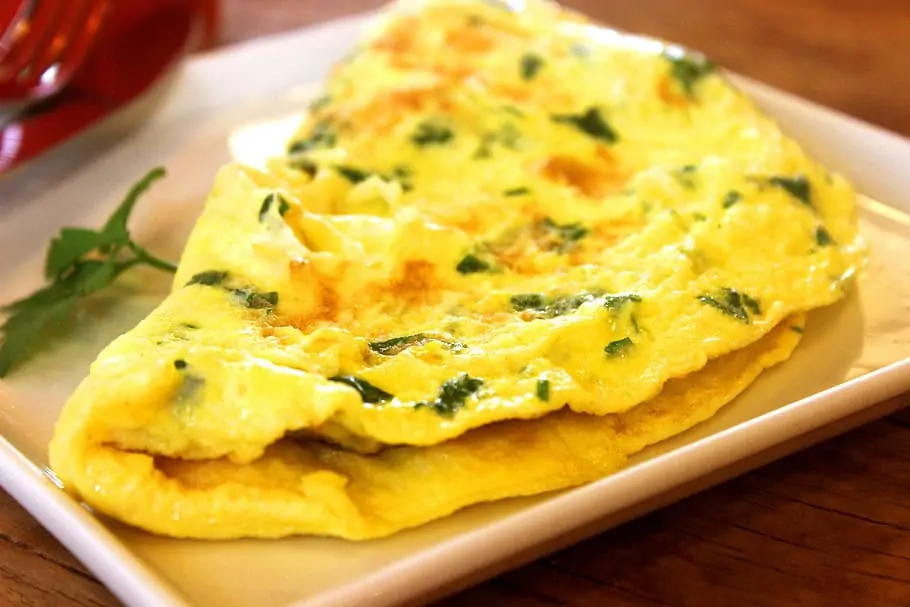The Best Fluffy Pancakes recipe you will fall in love with. Full of tips and tricks to help you make the best pancakes.
When it comes to culinary delights, few dishes can match the tantalizing flavors and aromatic spices of Vietnamese cuisine. Among the many mouthwatering dishes that Vietnam has to offer, the Vietnamese omelette stands out as a versatile and delectable option. Bursting with vibrant colors, bold flavors, and a harmonious blend of ingredients, the Vietnamese omelette is a must-try for all food enthusiasts. In this article, we will dive into the world of Vietnamese omelettes, exploring their origins, ingredients, cooking techniques, and more. So grab your apron and get ready to embark on a culinary adventure!
Table of Contents
Vietnamese Omelette: A Versatile Delight

The beauty of Vietnamese omelettes lies in their versatility. They can be customized to suit individual preferences and dietary needs. Whether you’re a vegetarian, a seafood lover, or a meat enthusiast, there’s a Vietnamese omelette recipe that will tickle your taste buds. Here are a few popular variations:
1. Shrimp Vietnamese Omelette
The classic shrimp Vietnamese omelette combines succulent shrimp with fragrant herbs and a touch of spice. The shrimp adds a delightful seafood flavor that pairs perfectly with the fluffy omelette. This version is often enjoyed with a side of fresh lettuce and herbs, wrapped in rice paper for a refreshing spring roll experience.
2. Vegetable Vietnamese Omelette
For those who prefer a lighter option, the vegetable Vietnamese omelette is a fantastic choice. Packed with colorful veggies like bean sprouts, bell peppers, and onions, this omelette offers a delightful crunch and a burst of freshness. It’s a great way to incorporate more vegetables into your diet without compromising on taste.
3. Tofu Vietnamese Omelette
If you’re a tofu aficionado or looking for a plant-based alternative, the tofu Vietnamese omelette is a wonderful option. The tofu is seasoned and pan-fried until golden brown, resulting in a protein-rich filling that complements the fluffy omelette. With the addition of aromatic herbs and a drizzle of soy sauce, this omelette is a satisfying and wholesome meal.
History of the Vietnamese Omelette
The Vietnamese omelette, also known as “Trứng Khoảng” in Vietnamese, has a rich history that is deeply rooted in Vietnamese culinary traditions. While the exact origins of the Vietnamese omelette are unclear, it has been a beloved dish in Vietnam for generations. Vietnamese cuisine draws influences from various regions, including China and France, resulting in a unique blend of flavors and cooking techniques.
Health Benefits of Vietnamese omelette
Vietnamese omelettes offer several health benefits:
- Protein-Rich: The eggs and protein options in the omelette provide a good source of protein, which is essential for muscle growth and repair.
- Nutrient-Dense: The combination of eggs and vegetables offers a range of vitamins, minerals, and antioxidants that support overall health and well-being.
- Low in Carbohydrates: Vietnamese omelettes are relatively low in carbohydrates, making them suitable for individuals following a low-carb or ketogenic diet.
- Versatile and Customizable: By choosing lean proteins and incorporating a variety of colorful vegetables, you can create a nutritious and well-balanced meal.
Is Vietnamese omelette suitable for all ages
Vietnamese omelettes provide various health benefits for individuals of all ages and genders:
- Men: The protein content in Vietnamese omelettes can support muscle growth and repair, making them a nutritious option for men who engage in physical activity or strength training.
- Women: The combination of eggs and vegetables in Vietnamese omelettes provides essential nutrients like iron, folate, and vitamin C, which are important for women’s overall health and well-being.
- Children: Vietnamese omelettes can be a great way to introduce children to different flavors and textures. The eggs and vegetables offer valuable nutrients for their growth and development.
Storage Instructions
If you have any leftovers, store the Vietnamese omelette in an airtight container in the refrigerator. It can be kept for up to 2-3 days. When reheating, gently heat the omelette in a pan over low heat to maintain its texture and flavors.
With its rich history, flavorful ingredients, and health benefits, the Vietnamese omelette is a delightful dish that appeals to a wide range of tastes. Whether you enjoy it as a quick and satisfying breakfast, a light lunch, or a flavorful dinner, this Vietnamese specialty is sure to leave you craving more.
Vietnamese Omelette Recipe
The Vietnamese omelette is a popular street food delicacy that can be enjoyed as a main course, a snack, or even for breakfast. This delightful dish features a fluffy omelette infused with aromatic herbs, succulent fillings, and a touch of Vietnamese culinary magic. Each bite unveils a burst of flavors that is both satisfying and addictive. Let’s explore the recipe: –
Vietnamese Omelette
Course: Sides, AppetizersCuisine: VietnameseDifficulty: Easy2
servings10
minutes5
minutes250
kcal15
gm8
gmIngredients
4 Eggs
2 tablespoons fish sauce
1/4 teaspoon black pepper
1/2 cup chopped vegetables (such as bean sprouts, onions, scallions, or bell peppers)
Protein options (such as shrimp, chicken or tofu)
Fresh herbs for garnish (such as cilantro, mint, or Thai basil)
Directions
- Crack the eggs into a bowl and whisk them until well beaten.
- Add the fish sauce and black pepper to the beaten eggs and mix well.
- Heat a frying pan over medium heat and add a drizzle of oil.
- Pour the beaten egg mixture into the pan and swirl it around to ensure even cooking.
- Once the edges start to set, add the chopped vegetables and protein options to one side of the omelette.
- Using a spatula, carefully fold the omelette in half, covering the fillings.
- Cook for another minute or until the omelette is fully set and golden brown.
- Slide the omelette onto a plate and garnish with fresh herbs.
- Serve hot and enjoy!
Notes
- Be sure to whisk the eggs thoroughly to create a light and fluffy omelette.
- Adjust the amount of fish sauce and black pepper according to your taste preferences.
- Chop the vegetables and protein options into thin, uniform pieces for even cooking.
- Experiment with different combinations of vegetables and proteins to create your own unique variation of the Vietnamese omelette.
- Garnish the omelette with a generous amount of fresh herbs for added freshness and aroma.
Vietnamese Omelette: Frequently Asked Questions (FAQs)
1. Can I make Vietnamese omelettes ahead of time?
Yes, you can make Vietnamese omelettes ahead of time. Prepare the omelette as usual, let it cool, and store it in an airtight container in the refrigerator. When you’re ready to enjoy it, simply reheat the omelette in a pan or microwave until heated through.
2. Can I freeze Vietnamese omelettes?
While it’s possible to freeze Vietnamese omelettes, it’s not recommended as the texture may change once thawed and reheated. It’s best to enjoy them fresh for optimal taste and texture.
3. Are Vietnamese omelettes gluten-free?
Yes, Vietnamese omelettes are naturally gluten-free as they do not contain any wheat-based ingredients. However, always double-check the ingredients and seasonings you use to ensure they are gluten-free.
4. Can I use different herbs in Vietnamese omelettes?
Absolutely! Vietnamese cuisine embraces a wide variety of herbs, and you can experiment with different combinations to suit your taste. Cilantro, mint, Thai basil, and Vietnamese coriander are popular choices, but feel free to get creative and use your favorite herbs.
5. Can I add cheese to Vietnamese omelettes?
While cheese is not a traditional ingredient in Vietnamese omelettes, culinary creativity knows no bounds. If you enjoy the combination of eggs and cheese, feel free to add a sprinkle of grated cheese to your omelette for a creamy and indulgent twist.
6. How can I serve Vietnamese omelettes?
Vietnamese omelettes can be enjoyed in various ways. They can be served as a main course alongside steamed rice and a side of vegetables, or they can be rolled in rice paper with fresh herbs for a light and flavorful snack. You can alsoserve them in a banh mi sandwich or as a filling for Vietnamese-style crepes, known as banh xeo. The possibilities are endless!
Conclusion
In conclusion, Vietnamese omelettes are a delightful fusion of flavors that showcase the richness and diversity of Vietnamese cuisine. With their fluffy texture, aromatic herbs, and flavorful fillings, they are a treat for both the taste buds and the eyes. Whether you’re a fan of seafood, vegetables, or tofu, there’s a Vietnamese omelette variation that will satisfy your cravings. So why not embark on a culinary adventure and try your hand at making a Vietnamese omelette today? Get ready to savor the vibrant tastes and exotic aromas of Vietnam, right in the comfort of your own kitchen!




